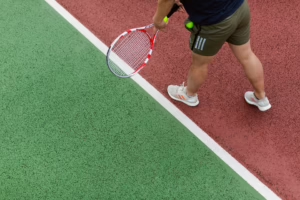Behind the Curtain: The Life of Professional Acrobats on Tour
The world of professional acrobatics is a captivating blend of artistry, athleticism, and rigorous discipline. From the euphoric highs of performing in front of enthusiastic audiences to the grueling demands of constant travel, the life of an acrobat on tour is a unique blend of both challenge and triumph. In this article, we will delve into the intricacies of their daily lives, uncover the emotional and physical demands of the profession, and explore the cultural impact of acrobatics in modern entertainment.
The Art of Acrobatics
Acrobatics, as an art form, has roots that trace back thousands of years. From ancient Greek gymnasts to Chinese circus performers, the tradition of showcasing human agility and strength has captivated audiences worldwide. Today, professional acrobats are often associated with circuses, theater productions, and variety shows where their skills take center stage.
Acrobats train rigorously to master a range of skills, including tumbling, balancing, aerial acts, and contortion. Each acrobat’s journey begins differently—some may start their training as children, while others might discover their passion later in life. Regardless of their beginning, acrobats must dedicate countless hours to practice and conditioning.
Training and Technique
Training as an acrobat is not just about raw talent; it requires a deep understanding of body mechanics, flexibility, and strength. Acrobats often train in specialized schools or under the mentorship of seasoned professionals. The training regimen typically includes strength and conditioning exercises, flexibility training, and skill drills.
In addition, many acrobats employ the use of video analysis to refine their techniques. This practice allows them to observe their movements, identify areas for improvement, and understand the intricacies of their performance. [1]
Life on Tour
The Routine
When acrobats go on tour, their lives transform into a well-oiled machine. Each performance is meticulously scheduled, and the routine becomes a central component of their daily existence. A typical day may start early, with stretching and strength training before breakfast. After the morning workout, the troupe might have rehearsals scheduled leading up to the evening show.
The travel aspect of touring can be one of the greatest challenges. Acrobats often move from one city to the next in a matter of days—or even hours—carrying their equipment and costumes with them. The mental and physical toll of constant relocation can lead to fatigue and burnout, making self-care an essential aspect of their lives. [2]
The Bond of Teamwork
Most acrobats work in troupes, creating a unique camaraderie among members. This bond is crucial, not only for the sake of performance but also for emotional support during the rigors of touring life. Trust is the foundation of many acrobatic acts, particularly in partner stunts that could result in serious injury if not executed correctly. Daily interactions, shared experiences, and collective challenges create a familial atmosphere that enhances their connection and performance.
The Emotional Landscape
Life on tour is not without its emotional highs and lows. While performing for enthusiastic audiences can be exhilarating, the pressures of being in the spotlight can lead to anxiety and performance-related stress.
The Joy of Performance
One of the biggest rewards for acrobats is the adrenaline rush that comes from performing. The applause of the audience, the bright lights, and the thrill of executing a flawless stunt offer an unparalleled sense of achievement. For many, this joy offsets the sacrifices made in their personal lives.
The Hidden Struggles
However, the life of a touring acrobat can also be isolating. Constant travel often takes a toll on personal relationships, and some acrobats may feel disconnected from family and friends. The emotional impact of living in a temporary environment can lead to feelings of homesickness and loneliness. [3]
The Impact of Technology
In recent years, the integration of technology into performances has transformed the acrobatic landscape. Innovations in lighting, sound, and digital effects have enabled acrobats to enhance their routines, creating more immersive experiences for their audiences.
Training with Tech
Additionally, technology has also changed the way acrobats train. Virtual reality (VR) tools and apps are increasingly being used for training and choreography. These advancements allow acrobats to visualize their performances and refine techniques with unprecedented accuracy.
The Cultural Significance of Acrobatics
Acrobatics do not just exist as entertainment; they embody cultural narratives and values. Throughout history, various cultures have celebrated acrobatics as an expression of community, identity, and creativity.
Global Perspectives
In China, for example, acrobatics are deeply woven into the cultural fabric. Chinese acrobatic acts often tell stories that reflect historical and social themes, showcasing not only artistic excellence but also national pride. Meanwhile, in the Western world, circus performances have evolved to challenge societal norms and celebrate diversity.
As acrobatic performances continue to gain worldwide recognition, they become a medium for cultural exchange, drawing attention to issues such as inequality, perseverance, and the human experience. [4]
The Future of Acrobatics
As we look ahead, the future of acrobatics seems bright and ever-evolving. With movements toward inclusivity and diversity in the entertainment industry, acrobats from varying backgrounds are finding platforms to showcase their skills in innovative ways.
Platforms for Expression
Social media has become a powerful tool for acrobats to share their artistry with a global audience. Platforms like Instagram and TikTok allow performers to connect with fans, promote their acts, and even collaborate with other artists. This visibility not only helps acrobats gain recognition but also provides opportunities for aspiring performers to learn and grow.
Challenges Ahead
Despite the increased visibility and opportunities, challenges remain. The COVID-19 pandemic exposed vulnerabilities within the performance industry, with many acrobats temporarily sidelined as theaters closed. The future will require adaptability from these professionals as they navigate an ever-changing global landscape.
Conclusion
The life of professional acrobats on tour is a tapestry woven with joy, struggle, camaraderie, and artistic expression. Behind the curtain lies a world that demands physical prowess, emotional resilience, and an unwavering commitment to the craft.
As we celebrate the extraordinary feats and stories of these performers, we realize that acrobatics transcend mere entertainment—they are a celebration of the human spirit, a testament to the power of teamwork, and a canvas for storytelling. The excitement of the performance is only the tip of the iceberg, revealing a deeper narrative that speaks to our shared experiences, dreams, and aspirations as human beings.
References
- Duffy, E. (2020). The Fundamentals of Acrobatics: Training the Body and Mind. New York: HarperCollins.
- Schmidt, R. (2018). Touring Challenges in Performance Art: The Cost of Constant Movement. Journal of Performing Arts.
- Evans, J. (2022). The Emotional Toll of Performing: An Insider’s Perspective on Life as an Acrobat. Circus Journal.
- Liu, Y. (2019). Cultural Narratives in Acrobatics: A Global Perspective. International Circus Studies.


























Add Comment